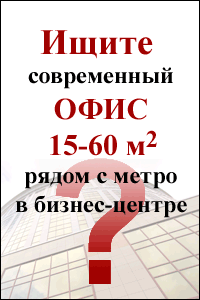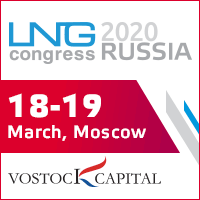Problematic transit and other risks highlight the urgency for gas market diversification

The numerous energy crises caused by problems of shipping fuels to consumers via unreliable transit states such Ukraine and other states once again call for urgent diversifications of energy supply routes in Europe — both by the producers and consumers.
Indeed, the ongoing diversification of Russian gas routes, seen as strategic to hedging the enormous risks associated with the transportation of gas through countries with unstable political and economic regimes or outright ‘unfriendly’ to Russia, which could use their privileged transit status to dictate unacceptable gas shipment terms to the Kremlin, moved into another phase of development in February 2009, when an international consortium led by Russia’s gas monopolist Gazprom launched the first Russian liquefied natural gas (LNG) plant within the Sakhalin-II project. According to Ian Craig, CEO of Sakhalin Energy, the operator of the Sakhalin-II project, Sakhalin-II, on reaching its projected full capacity, will account for about 5% of the global LNG production and contribute significantly to strengthening the global energy security.
Speaking at the opening ceremony, Gazprom CEO Alexei Miller said Sakhalin has now firmly established itself on the global energy map. “Today we have launched the first LNG production in Russia. This will give a powerful impetus to economic development in the Far East of Russia,” he added. “The successful execution of this project now makes it possible for Gazprom to strengthen its position on the global energy markets, promote trade and economic relations between Russia and the Asia Pacific region, facilitate the diversification of gas supply sources, thus enhancing our energy security.”

The historical event was attended by Russian Dmitry Medvedev and other top-ranking statesmen from countries partnering in the project, including Japanese Prime Minister Taro Aso and the Netherlands Economic Minister Maria van der Hoeven as well as heads of companies, which are the principal shareholders in the project, including Royal Dutch Shell CEO Jeroen van der Veer, Mitsui President and CEO Shoei Utsuda, Mitsubishi Corp. President and CEO Yorihiko Kojima and representatives of companies with contracts to purchase the LNG and international financial organizations that help bankrolled the multibillion-dollar project.
Ukrainian transit blackmail underscores the urgent need for diversification
Currently, the instability of the European gas market caused by Ukraine’s blockage of Russian gas flows through its territory to consumers is further worsened by a lack of other feasible alternatives — in terms of cost, reliability, security and proximity — to Russian gas. For instance, Norway, a major gas supplier to the continent, and other smaller suppliers such as the Netherlands and Great Britain, which are working at their maximum production and pipeline capacity limits for exports, are incapable of completely offsetting deficits caused by disruptions to Russian gas deliveries to the continent.
However, it is important to note that diversification does not mean completely discarding the current routes or markets, but a search for new sources of gas suppliers, when taking about European consumers, or new, more or equally viable and lucrative gas markets in addition to the existing ones by the energy producers. Such searches are more than justified, especially as no single gas supplier, including even Russia with its world’s largest gas reserves, can fully meet the gas needs of Europe. Analogically, there is no single market that can also fully meet the needs of any energy producer.
This stark reality highlights the main postulates underling the effectiveness of a gas business, namely, irreproachable reliability of a gas supplier and existence of long-term contracts with solvent consumers as the two most vital elements that enhance the profitability and sustainability of the global gas industry and those directly involved in it. This requires a special level of mutual understanding among all partners when establishing such long-term cooperation. Indeed, this is what differentiates the gas industry from the oil market, as long-term commitment is essential to the definition of the geography of gas routes, and hence the markets for gas. This determines the profitability and the period of recoupment of the outlaid investments.
Beginning of Russia’s gas relations with the rest of Europe
The history of energy relationships between Russia and the rest of European states began with the delivery of the first batch of Soviet Union’s commercial gas exports to Austria in the end of the 1960s. With time, the scope of cooperation only broadened, as the number of European countries feeding off the Soviet gas export networks soared to unprecedented heights. This was notwithstanding the gas partners’ radical differences on global issues that later led to some of the worst socio-economic and political phenomena such as the Iron Curtains, block affiliations, Cold War, etc. Over this time, and despite these differences, the Soviet Union, and later, Russia after the radical political transformations and economic changes in Europe in the 1990s, have proved to be an absolutely reliable partner in supplying gas to the continent.

It is, therefore, not surprising that today almost all European states, albeit in different degrees, are tied to Russia through a ‘special energy umbilical cord.’ This is most evident in the gas industry, where the share of Russian supplies varies from 10-20% of national needs in such countries as France, which have their sources of gas or reliable alternative sources of external supplies, to 100% of national needs in such countries as Hungary, Slovakia and Moldavia, which do not have their own sources of gas or reliable alternative sources of supplies. It, therefore, came as no surprise that the latter group was the worst-hit during the recent transit crisis with Ukraine. Other European states’ dependence on Russian gas lies between these two extremes.
Russia and EC wary over overdependence
Against the background of the rapidly growing energy needs in Europe and the rising differences between Moscow and Brussels on a myriad of political and economic issues, such near-absolute dependence on one another on energy issues no longer suits Europe, especially the EU member-states, which view such dependence on Moscow as making it highly vulnerable, thus comprising its energy security and safety, in case of escalation of confrontations with the Kremlin.
Similarly, Russia also does not like its lopsided dependence on one major market for its gas sales, even if it is the lucrative, solvent European market, as the continuation of such policy today is tantamount to placing ‘all eggs in one basket.’ Such strategy is now seen by Moscow as politically myopic and economically unjustified, especially from the point of view of management of all the possible risks connected with gas business. In other words, the two partners have come to understand the near-impossibility of using only market mechanisms to successfully hedging all the risks of such a socially sensitive industry as the gas market. The commonality of this yearning between the gas producers and consumers, though caused by different reasons, is pushing Russia to radically diversify its energy market, and Europe into searching for new, additional sources of gas supplies. Experts say this strategy is both economically and politically justified.
At the same time, however, Russia and EU, or more appropriately, the whole of Europe, jealously relate to one another’s plans on diversifications of its gas energy markets. For instance, the active searches by EU leadership and non-EU states for alternative or additional sources of gas supplies often cause concerns in Moscow, though the prospects of practical realizations of such plans in the near future are close to nil. Similarly, Russia’s vigorous policy in diversifications of its gas routes not only in the western (see inserts), but also in the eastern directions to the Asian markets of China, Japan and South Korea, also causes serious irritations in both Brussels and non-EU capitals, which fear that Moscow might reroute its gas supplies to the fastest-growing Asian markets at their expense. So far, the Kremlin’s explanations that Russia’s eastward diversifications of its gas routes pose no threats to Europe have failed to soothe the nerves of its customers on the continent.

Diversification consolidates Europe’s dependence on Russia
Russia, as a producer, is also aware of the increasing difficulties poised by its reliance on erratic regimes in transit states and, therefore, is developing several routes in order to lessen such dependence without disrupting supplies to EU and other international gas markets. Some of these routes in Europe include the Nord Stream, South Stream and the Blue Stream pipelines.
Commenting on Russia’s energy diversification strategy, Russian Prime Minister Vladimir Putin said the gas crisis with Ukraine and its negative effects on Europe have given a huge boost to Russian pipeline projects on the continent. “Russia has long ago realized that such problems may appear in transit states and has decided to maximally diversify its energy delivery routes,” he noted. “The current crisis with Kiev has finally convinced European consumers on this issue.”
Europe has limited alternatives
Europe’s other alternative gas supplies such as from Algeria (about 10% of the continent’s needs) are not enough to mitigate the negative effects from the disruptions to Russian supplies, while other African sources are made less attractive by longer distance and regional instability. Similarly, Iran, with its massive gas reserves, is viewed as “too anti-Western” to qualify for a reliable gas supplier to the continent.
Besides, there are also plans for shipment of liquefied natural gas from the Middle East, North and Western Africa and other far-off locations. However, apart from the colossal investments, all these probable gas projects are located in countries and regions with volatile and unstable political regimes, high economic risks and require urgent solutions of complicated problems, including logistics and safety-related issues that could undermine their viability, and hence reliability in terms of guaranteeing Europe’s gas security. This reality, in practice, means that Russia, EU and indeed, the rest of Europe, will still remain joined together by the existing gas ‘umbilical’ cord for a long time to come.
Shaky Nabucco alternative lacks feasibility
Another alternative, which would allow gas to bypass both Russia and Ukraine en route to Europe, is the planned Nabucco gas pipeline. The nearly 8-bln-euro project is expected to bring gas from the Central Asia’s Caspian Sea region, and possibly the Middle East, via Turkey to Austria in the EU, and further onto the continental gas markets. A pet project of the EU and United States, the pipeline is seen in Brussels and Washington as an essential step toward reducing the continent’s lopsided dependence on Russia’s gas.
This necessity was once again reiterated at the Nabucco Project Summit in Budapest in January by Czech Prime Minister Mirek Topolanek, who currently holds the rotating EU presidency, when he noted that the Czech EU presidency sees energy security as one of its top priorities. Addressing the summit, which was also attended by representatives of Hungary, Bulgaria, Azerbaijan, Georgia, Egypt, the European Commission and the European Investment Bank, Topolanek called on the EU member states to support the construction of a new corridor for gas supplies to Europe. “It is time that the Nabucco project became the Nabucco process. The construction of a new gas pipe will strengthen the independence, security and prosperity of the EU member states,” he said. “Nabucco may become a bridge connecting the past with the future, crossing geographic, political and religious boundaries. It is the demonstration of the possibilities of cooperation.”
Project mired by two key problems
However, the project is mired by two key problems associated with any gas pipelines business ventures, namely, the availability of easily accessible and highly reliable huge sources of gas to fill pipelines to projected capacities for a long time and the colossal amounts of initial capital commitments needed to kick-off such projects. At this moment, the Nabucco project has yet to solve these two problems, which cloud its already hazy feasibility prospects.

With regard to the sources, the stakeholder nations expect much of the gas to come from the Caspian region. But of the Caspian littoral states, namely Russia, Azerbaijan, Kazakhstan, Iran, Turkmenistan and Uzbekistan, only the Azeris have expressly shown interest in the project. All the Central Asian states have signed exclusive long-term contracts with Russia’s Gazprom, which exclude them from this project, while Russia, for obvious reasons, is not interested in a project designed to reduce its gas markets in Europe. This leaves only Iran as the only source of gas, but for reasons already given above, building a strategic energy pipeline to Europe on Iran’s gas will, according to experts, be tantamount to economic suicide and worst form of manifestation of geopolitical myopia by EU bureaucrats.
Also currently unresolved are problems relating to the exact topographical routes and countries’ territories, which the gas pipeline will eventually transverse during its construction. For instance, the Turkish part of the gas corridor is now in doubt following the Turkish political leadership’s decision in January 2009 to link its further participation in the project with its EU membership bid, Ankara’s long-awaited dream. “We shall not support the project if the EU does not unlock the part of the negotiation on EU membership,” Turkish Premier Recep Tayyip Erdogan said. “If we find ourselves in a situation, where the energy part of the negotiations is blocked, then we shall review our position on this project.”
Another political blow to the project came from the August war in the Caucasus last year. Specifically, the Georgian aggression against South Ossetia has raised questions on the safety of this strategic energy pipeline, forcing the stakeholders to broaden their searches for safer corridors, including through Armenia, a move that will make Yerevan a strategic part of this project. However, the existing fruitful, long-term strategic partnership pact between Moscow and Yerevan across a broad spectrum of areas will not allow Armenia to participate in the project. This is further buttressed by the participation of the Armenian president, Serzh Sarg syan, in the Moscow Gas Summit, the only foreign head of state, to attend the forum.
syan, in the Moscow Gas Summit, the only foreign head of state, to attend the forum.
With the first problem — the search for sources of abundance supplies of gas for the pipeline presently unsolved, and the second problem — securing adequate funding from both private and public sectors has become a hard nut to crack, an issue that is further compounded by the current global financial crisis. Speaking at the conference, the host, Hungarian Prime Minister Ferenc Gyurcsany, said these issues are being solved by stakeholder countries and potential gas suppliers. “We will do everything we can to make sure that stakeholder countries can come to an intergovernmental agreement by the middle of June. Following this, we will endeavor to set up preliminary agreements with gas supply countries.”
Gyurcsany added that he hopes the EU will eventually fund the project to the tune of 2bln.euros (about $2.6bln), with an initial 200-300mln euros needed to get the project off the ground. However, the summiteers’ enthusiasm over EU’s intended huge financial commitment was not shared by European Union’s Energy Commissioner Andris Piebalgs, who though pledged moral support for the project, diplomatically declined to pledge any direct EU funding for the project, at least, at this stage.
Reinhard Mitschek, head of the Nabucco consortium, and Philippe Maystadt, president of the European Investment Bank expected to foot some of the costs, are, however, optimistic that these problems will soon be solved. Specifically, Mitschek said he expects the engineering work and the marketing of Nabucco’s gas transport capacity to begin later this year. “On the basis of statements from political representatives and banks, we believe an intergovernmental agreement will be reached soon,” he said. Having said that, Mitschek, aware of the significance of securing reliable gas sources to the feasibility of the whole project, specifically noted that forging agreements with potential suppliers in gas-rich Central Asia and the Middle East is of paramount importance. “Financing will not be an issue. Therefore, we need to concentrate more on the sources of gas supplies.”
Russia is very calm over Nabucco
All things being equal, the Nabucco project will have to overcome a myriad of problems and challenges in order to see the light and to pose a tangible threat to Russia’s stronghold on the European gas market. Besides, even in the highly hypothetical case of solving all these problems positively, there is a visceral fear among the stakeholders that the Nabucco project will be made ‘largely redundant’ in the best case scenario and ‘still dead on delivery’ in the worst case scenario by Gazprom’s more reliable and powerful South Stream pipeline traversing the same geographical regions. For one, this project is already under development with a projected annual capacity of about 30bcm of gas, which, if necessary, could be boosted by extra 15bcm to 45bcm.
This fear is further amplified by the fact that the Nabucco project, on the contrary, is still on the drawing table, requires up to 8bln.euros that have yet to be found for the construction, has no reliable gas sources, and in case of successful completion, will only have a projected maximum capacity of 30bcm per year.
By all indications, the Kremlin has probably factored all factors into the politicized European gas equation and come to the conclusion that irrespective of the solutions to the European gas equation, the odds will always be in Gazprom’s favor. Thus, it now becomes absolutely clear, why Russia is very calm over the Nabucco project, as it does not see it as a real and sustainable long-term competitor to it on the European gas market. And, it might just be right.












 Web design,
Web design,